Are You Getting the Most Value From Your HubSpot Subscription? The HubSpot Admin Accelerator program is designed to optimize your HubSpot investment.
Leverage the HubSpot CRM to Power Your Marketing
We're looking at how to harness the power of HubSpot and its CRM to leverage data and information into a revenue-generating growth machine.
CRM is the cost of entry into a modern market: try running a business without one. But a CRM is more than just a digital filing cabinet. It's a way to access, understand, and monetize a goldmine already at your fingertips: customer data.
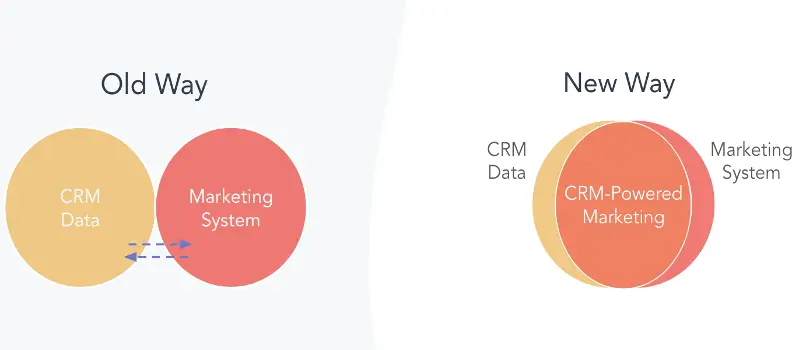
Where we (or many others) still are
The Data Gold Rush
Data on its own is useless. For data to be practical, it needs to be collected, stored, and harnessed so that it becomes valuable, and maintaining your CRM database requires little additional effort.
For example, having all the names of anybody showing interest in your business over the last eighteen months can be helpful.
But how about knowing who was just browsing, who is ready to buy, or even who is ready to buy AND checked two or three other boxes critical for making a sale?
By better understanding your data and working smart, you can ensure the right messaging gets to the right people at the right time without labor-intensive or prospect-annoying processes. Targeting has also become more sophisticated, meaning that ads are now less interruptive and more informative — so sophisticated that we now take the quality of the ads served in our Instagram feeds and YouTube videos for granted.
The old ways don't work anymore.
Contemporary digital marketing has changed from its first inception 20 years ago. GDPR, privacy, savvy prospects, and even giant corporations like Apple redefining data mining have all had a profound impact.
Does the following sound familiar?
-
Buying data lists
-
Mass email communications with misspelled or incorrect names
-
Cold calls without consent
-
Spam SMS messages from random numbers
You probably even still see some of them. And we're not talking about the occasional 'Hi {first name}’ greeting mistake every marketer dreads sending. We're talking about the data-scraping, privacy-invading, industry-shaming practices that gave us all a bad name.
Any company relying on these practices today would seem ancient by comparison. But the uncomfortable truth is many businesses STILL market like this. We bet you've even had one this week. But why? Malicious intent? Lack of caring?
In most cases, it's none of the above. It's the opposite. Many companies are so excited to get their message out there that they forget the blend of science and craft that comes together to create great marketing. They forget they sit on a goldmine of prospect data offering powerful insights into behavior, predilections, and desire.
Say hello to the Customer Relationship Management (CRM) system.
A CRM is a system that holds the data of your contacts. It can be as simple as a spreadsheet or as powerful as a constantly evolving AI single source of truth. When used correctly, a CRM can drive more revenue and delight prospects at every stage of the buying journey, no matter if you are looking to execute ABM with HubSpot or if you are a local services business reaching out to your first prospects.
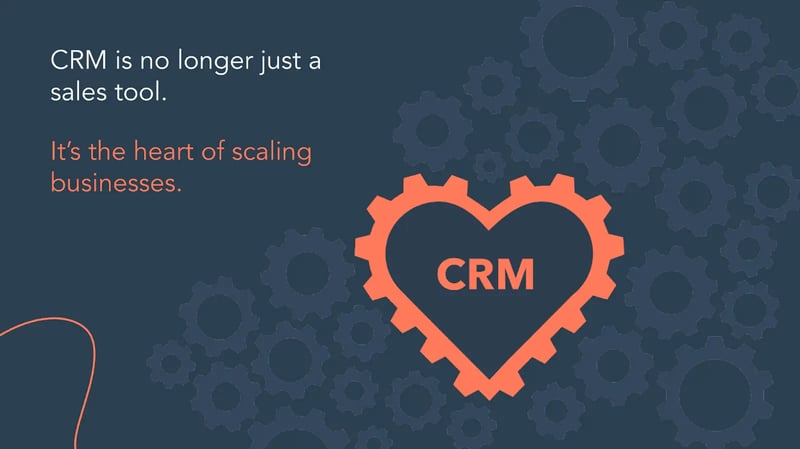
Why You Need to Leverage Your CRM for Experience-Driven Marketing
The marketers who get ahead today are hyper-focused on the customer experience. Experience-driven marketing puts your customers at the center of everything you do as a marketer. It's a major reason why HubSpot has adopted the flywheel. When focused on the customer experience,
-
Marketing attracts and feeds into Sales in a smooth transition.
-
Sales engage and feed into Service.
-
Service delights and feeds back into Marketing.
And all of this is only possible when the customer is at the center, managed by a CRM.
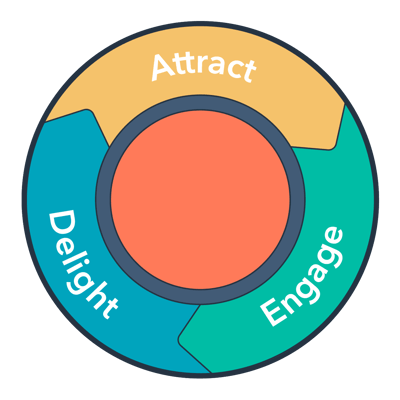
Finding the best CRM solution and leveraging your CRM is crucial to experience-driven marketing. Experience-driven marketing isn't just a buzzword - it's your secret to growth. Forrester's research found that companies who said they were focused on experience grew 40% faster and increased customer lifetime value by more than 60% versus those who weren't.
Very few marketers have all of their tools and tactics tightly integrated into a CRM -- which often leads to disjointed customer experiences, siloed data, and an inability to know what's working.
This is why we're investing so much effort in tightly integrating HubSpot's Marketing Hub with the CRM -- to give your team a unified view of the customer experience, which allows you to create truly personalized experiences across all channels and to help you correctly measure your success as a marketer.
A CRM Helps Make Your Marketing Offers Relevant
Rooting your marketing in a suitable CRM lets you create personalized experiences across every channel. Personalization continues to be the holy grail for delivering a great experience. In this hyper-competitive environment, it's harder than ever to win attention -- and we all know that the more you personalize, the greater your chances are of being noticed.
What does real personalization look like to me? Real personalization is when the content on your site changes, recommending content that your visitor hasn't read yet. Or when that visitor has shown interest in one topic, you show them a related offer. Or when you have CTAs for customers and different ones for prospects. Or when the chatbot on your site remembers not only their name but who their sales rep is. All of this is possible through CRM-driven marketing.
The three paths to CRM success:
- Segment: ensure prospects hear a message suited to their needs
- Contextualize: explain in clear terms why it's useful
- Personalize: make them feel valued and loved
Segment.
The average (American) consumer is bombarded by promotional messaging and sees anywhere between 5,000 and 10,000 advertisements per day (Forbes).
Think about the last time you were relaxing and browsing on your phone, maybe doing some online shopping, checking in on social media, or reading the news. How many irrelevant ads did you see?
“Today only - 50% of all organic aloe vera & chili peanut butter cups!”
“Door, doors, doors! Get your doors from Acme doors!! Big doors, small prices!”
"Crypto, something or other."
We bet that this week alone, you've closed down at least one web page because the advertising ruined your online experience. But there's a more significant danger for marketers lurking in the internet shadows than angry prospects. Something much scarier… Apathy!
When your consumer doesn't feel like your messaging directly relates to their life at that moment, they'll tune out. This is why a CRM is vital to modern marketing. If you don't understand your customer, you can't give them the content they need when they need it in a way that works for them.
But the good news is you already have the answer to the problem in your marketing arsenal - the data in your CRM. From that data, you can isolate specific groups of customers by wants, needs, and readiness to buy.

Use HubSpot lists to segment your database.
Lists are a great way to isolate segments of your database by any data point you hold. It can be contacted by (who they are), company (where they work), or activity (what they're doing) focussed, and they can even constantly update to suit changing data fields in real-time.
In minutes, you can build a list of all contacts in the third month of their current contract - would they benefit from a useful upsell to complement their existing package?
How about targeting every prospect that's visited your pricing web page more than once in the last 30 days by sending them a discount code?
The same messaging isn't going to work on both of those two groups. But with a small amount of thought, each will get messaging they're likely to welcome because it solves a specific problem they have.
Create manually tracked custom behavioral events.
Manually tracked custom behavioral events enable you to define and track events unique to your business. Custom behavioral events can be tied to contact properties, which you can use across HubSpot's tools. Manually tracked events use the Analytics API and require a developer to set up.
This HubSpot Marketing Hub Enterprise tool allows you to track more advanced analytics on your website or from external third-party apps to gain richer context about the customer journey.
Contextualize
Every buyer for every product must pass through the three key buying stages: Awareness, Consideration, and Decision.
But depending on your product or service, those stages often vary. A thirsty person on a hot day will travel from Awareness to Decision about buying a cold drink faster than a Project Manager looking at new forecasting software for a global Saas business. One is made in minutes; the other could be months.
Although the journey may change, one fundamental remains consistent: consumers need specific buying stage-specific content before deciding.
Think about it - before a Project Manager becomes aware your forecasting software even exists, they first need to either experience or recognize they have a problem: the pain caused by poor planning tools. Then, with a problem to solve, they will look for a solution - from integrating a new tool right to outsourcing the entire problem.
Build Campaign triggers that are linked to the Buyer's Journey using HubSpot.
Consider the below content created for buyers at each stage of the journey; triggering emails and messages for the prospect linked to where they find themselves in the buyer's journey will ensure that content is relevant to their needs. Put yourself in the buyer's shoes and ask yourself what they need at each stage of their journey to purchase.
-
-
Awareness - Blog: Why Project Managers never have enough hours in a Day.
-
Consideration - Guide: 10 Ways to Become a More Effective Project Manager.
-
Decision - Case study: Why company X chose our technology to solve their forecasting problem.
-
By labeling prospects in your CRM depending on their customer journey, you can ensure they see suitable messaging for their journey. As you're unlikely to propose marriage on a first date, you don't want to bombard a prospect with technical data when they've only just discovered they have a problem. Keep sending well-timed, valuable pieces of information like a small trail of breadcrumbs that draw the buyer in rather than forcing your product on them too soon.
Using HubSpot Marketing Hub for content marketing and segmenting your audience, you can ensure they receive relevant, contextually relevant sales messaging to nurture prospects and improve convention rates.
Use HubSpot Smart Content to Contextualize your messaging at scale.
HubSpot Smart content allows you to create different content based on rules. Your emails, landing pages, and CTAs can display differently depending on what is known about a prospect or contact.
For example, rather than taking time to send context-specific content to prospects manually, you can adapt your HubSpot pages to react to their needs instead. You can use the data in your CRM to show Awareness, Consideration, or Decision-related content depending on their needs. Allowing you to tailor content to the stage of the buyers' journey.
By understanding which prospects need to see your messaging, you reduce admin, boost conversion rates and drive more revenue with less effort.
Personalize.
You can use HubSpot to personalize sales messaging on any standard or custom properties (the various data points you collect on contacts).
Effective personalization doesn't just mean greeting somebody through email by name. It may have been disruptive fifteen years ago, but the modern consumer is tech- and data-savvy.
Modern personalization means sending relevant messaging promptly using the correct language, tone, and subject matter.
Imagine this: receiving an email greeting you by name. Nice, but you've already had four others doing the same that morning alone. You can spot an automated email by now.
But what about four weeks before your company-wide HR software renewal is up for review? Have you received a timely message specific to your HR management problem?
The following example shows the power of personalization: You've started a small business in the last six months, and you receive a persuasive message from an invoice management software vendor on the perils of not completing your tax returns in time.
You want your prospects to feel a sense of serendipity. Ultimately, we know it was effective CRM management because you created a HubSpot workflow to message HR managers one month before their next renewal date or small business owners who've set up shop in the last year. However, prospects will feel connected with your brand because the message is aimed at their needs at the right time.
Where contextualizing ends and personalization starts can be a grey area, so it’s probably easier to think of it like this:
Segmentation - to whom do we want to speak?
Contextualization - what are we going to say?
Personalization - how are we going to tell it?
Contextualization ensures you don't torpedo a conversion by going too hard too soon. Still, personalization ensures the prospect feels you're speaking directly to them when they’re most likely to want to hear your message.
Contextual communications should be personal without being too intensely personal that it comes across as overbearing. Customers and visitors are looking for personalized information that feels helpful and offers value when they need it.
Tip: Use custom properties to gather company-specific information on your leads
HubSpot comes ready-packed with various data points you can collect on each prospect. Ranging from name and address right through to how many emails they've opened, HubSpot can help you build a better understanding of both groups and individuals.
But because HubSpot is looking to cater to companies with products ranging from cybersecurity to animal feed suppliers, we're limited in the universal properties we build. Not every customer will need to capture the weight of Heilongjiang livestock, right?
But with custom properties, you can build bespoke data points specific to your needs.
Your CRM is your growth engine.
-
Keeping your CRM data clean and easy to access can drive more sales and delight customers.
-
Segmenting your audience means you can narrow down exactly which groups of prospects you want to target to ensure you get the right message.
-
Contextualizing your messaging by matching it to a specific point in your prospect's journey allows you to boost funnel conversions at every stage.
-
Personalizing your messaging means treating your prospects as real people so they trust and respect your brand. So show your prospects they matter by understanding their pain points and providing helpful information and solutions to their problems when needed.
You Might Also Like
The CRM triggers that can power hyper-personalized communications
Your CRM is packed with valuable demographic data that you can use to personalize your communications. However, using activity and engagement data to send out timely messaging could be the difference between a personal email and hyper-personalized messaging.
- Use page tracking to provide individual recommendations
By knowing which pages a contact has visited, you can offer specific recommendations to contacts tailored to their needs. Think of this as remarketing for emails.
- Use deal stages to trigger customized bots on pages to help drive sales
Use deal stages to trigger a bot to appear to prospects in a specific deal stage. Having a bot tailored to the stages of the buyer's journey helps answer questions buyers need at the right time.
- Use known dates to trigger personal messaging.
Send out a birthday email, anniversary mail, or even a mail about a customer's renewal date. These timely messages will help you engage with prospects and customers using the information you've gathered.
- Use workflows to delay actions until a contact responds/performs an action
In workflows, you can delay actions until a connection has completed an activity, like visiting a web page or completing a form. The advantage of this is that you can wait till a buyer is engaged with you before you send them an email. This will allow you to align with buyers in real time.
Turn your entire CRM into a marketing machine by sending out the right message to the right people at the right time.
HubSpot Resources
As a marketing manager using HubSpot Marketing Hub, several valuable resources are available to support your marketing efforts and enhance your knowledge. Here are some recommended resources:
-
HubSpot Academy: HubSpot Academy offers many educational resources, including online courses, certifications, and practical guides. Marketing-specific courses cover lead management, email automation, reporting, and sales enablement. By investing time in HubSpot Academy resources, marketing team members and managers can effectively deepen their knowledge and skills in leveraging the core functionalities of the HubSpot Marketing Hub. HubSpot Academy is available to all HubSpot users, even on free plans.
-
HubSpot Community: The HubSpot Community is a vibrant online community where marketing professionals come together to share knowledge, exchange ideas, and seek advice. Engaging in the community allows you to connect with like-minded marketers, learn from their experiences, and get answers to your questions. It's an excellent platform for networking, gaining insights, and finding solutions to common marketing challenges.
-
HubSpot Partner: Looking for more customized support? As certified and accredited partners, our consultants provide HubSpot Services and customized services configured to your business needs, maximizing the potential of your HubSpot Marketing Hub. Whether you need assistance with implementation, onboarding, customization, integration, or strategic marketing enablement, we're here to help you accelerate your growth marketing and achieve your objectives.
-
HubSpot Suite of Products: The HubSpot Suite consists of HubSpot Content Hub, HubSpot Marketing Hub, HubSpot Operations Hub, HubSpot Sales Hub, HubSpot Commerce Hub, and HubSpot Service Hub. HubSpot CRM is a shared resource and is part of all hubs.
Applying any or all of these ideas will undoubtedly drive more revenue through your business in a sustainable, cost-effective way. You can build profoundly personal and contextual campaigns at scale using HubSpot's simple but powerful and effective toolset.
This content is also available in:
- German: Mit dem HubSpot CRM Ihr Marketing auf Touren bringen
- Spanish: Impulsa tu Marketing con HubSpot CRM
- French: Utilisez le HubSpot CRM pour dynamiser votre marketing
- Italian: Sfruttare il HubSpot CRM per potenziare il vostro marketing
- Romanian: Valorificați HubSpot CRM pentru a vă îmbunătăți marketingul
- Chinese: 利用 HubSpot CRM 赋能您的营销

Joachim is a certified HubSpot trainer with over 13 years of experience in content marketing, strategy, website development, and SEO. He has implemented numerous large-scale, international growth marketing programs, including one with UiPath, which grew from a startup to a successful IPO on the NYSE. Joachim has special expertise in multilingual marketing and sales enablement projects, and he uses the latest AI technologies to help our clients.




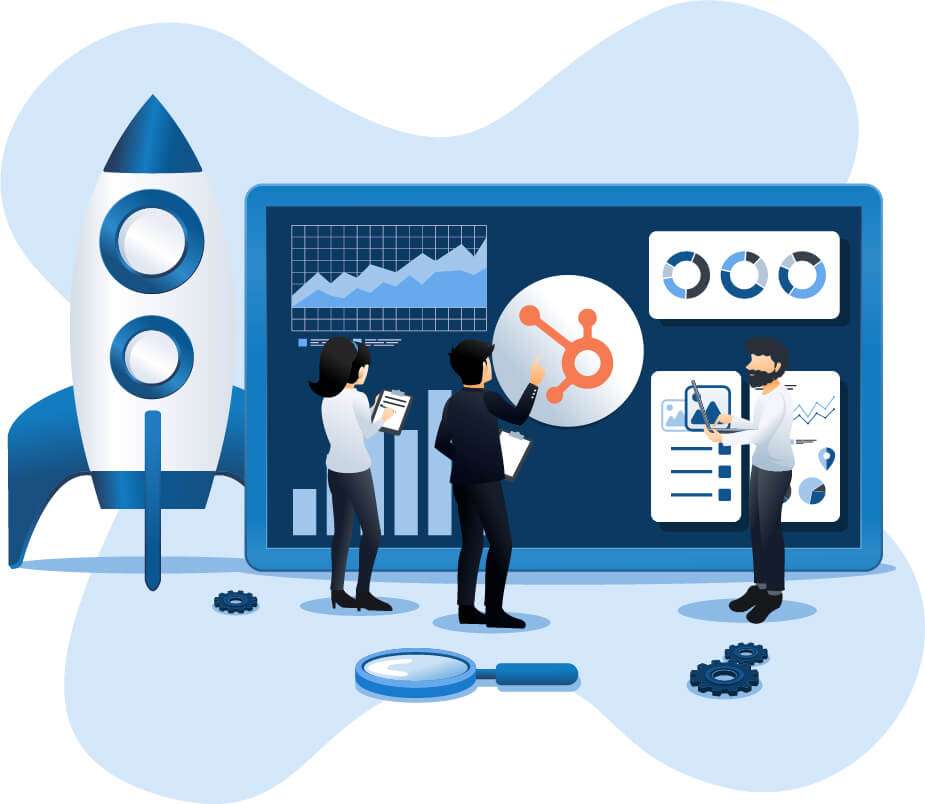



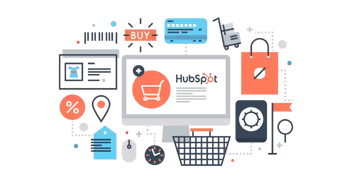
Leave a Comment